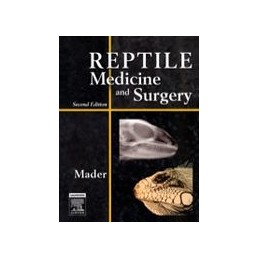Description
This outstanding clinical reference provides valuable insights into solving a clinical dilemma, formulating a diagnosis, developing a therapeutic plan, and verifying a drug dose. This book offers the most thorough information and knowledge in the increasingly popular area of keeping reptiles as pets. The information is outlined in an easy-to-use format for quick access that is essential for emergency and clinical situations.
Product Details
Reference
36018
EAN13
9780721693279
ISBN
9780721693279
Data sheet
Publication date
2005
Issue number
2
Cover
hard cover
Pages count
1264
Dimensions (mm)
216 x 276
Section 1 - Introduction Section 2 - Biology Section 3 - Anatomy, Physiology and Behavior Section 4 - Medicine Section 5 - Clinical Techniques/Procedures Section 6 - Differential Diagnoses by Symptoms Section 7 - Specific Diseases and Conditions Section 8 - SPECIAL TOPICS Section 9 - APPENDIX GLOSSARY




 Delivery policy
Delivery policy
 Security policy
Security policy
 Return policy
Return policy
